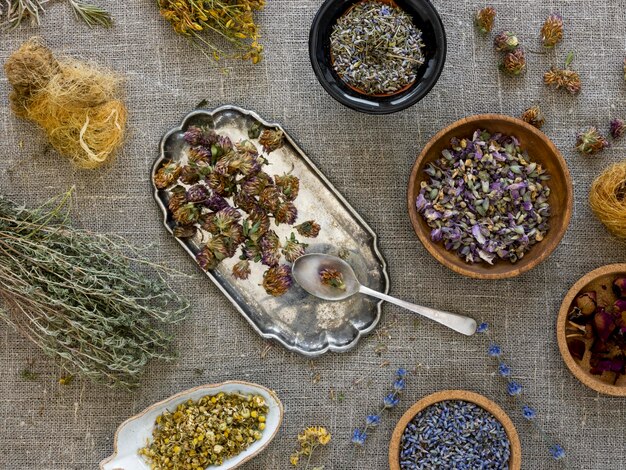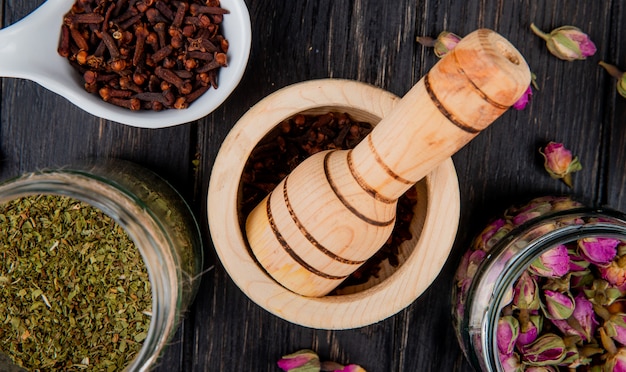Ask Ayurvedic doctor a question and get a consultation online on the problem of your concern in a free or paid mode. More than 2,000 experienced doctors work and wait for your questions on our site and help users to solve their health problems every day.
Shop Now in Our Store
Saptasaram Kashayam Uses: A Comprehensive Guide

Introduction
In today’s rapidly evolving healthcare landscape, many individuals are exploring holistic approaches that integrate traditional knowledge with modern scientific validation. One such remedy garnering attention is Saptasaram Kashayam, an Ayurvedic formulation with a history of use for various ailments—especially those linked to digestion, musculoskeletal health, and women’s wellness. According to the World Health Organization (WHO), nearly 80% of the global population uses herbal medicines for some aspect of primary healthcare, illustrating the vast interest in such treatments.
But what exactly is Saptasaram Kashayam, and does it live up to the hype? In this comprehensive article, we’ll take a close look at Saptasaram Kashayam uses, its historical context, scientific underpinnings, and current research. We will also discuss potential benefits, precautions, and recommendations for safe usage. By the end, you’ll have a thorough understanding of this Ayurvedic decoction and how it may fit into a balanced healthcare plan.
Disclaimer: This article is for informational purposes only and is not intended as a substitute for professional medical advice. Always consult a qualified healthcare provider before making any changes to your treatment regimen.
What Is Saptasaram Kashayam?
Historical Roots in Ayurveda
Ayurveda, an ancient medical system originating from India, places great emphasis on the use of herbal formulations known as kashayams (decoctions). These preparations are typically made by boiling selected herbs in water to extract their active constituents. Saptasaram Kashayam, referenced in classical Ayurvedic texts such as the Sahasrayogam and Ashtangahridaya, combines several potent herbs in a specific ratio to address particular health conditions.
Core Ingredients
“Saptasaram” in Sanskrit implies a formulation derived from “seven” essential ingredients. While variations may exist among manufacturers, the most common herbal ingredients traditionally include:
-
Punarnava (Boerhavia diffusa)
-
Devadaru (Cedrus deodara)
-
Chitraka (Plumbago zeylanica)
-
Shunti (Zingiber officinale, i.e., ginger)
-
Madanapala (Randia dumetorum)
-
Vacha (Acorus calamus)
-
Rasna (Pluchea lanceolata)
These herbs are well-known in the Ayurvedic pharmacopoeia for their potential anti-inflammatory, carminative, and analgesic properties.
Mechanism of Action: How Does Saptasaram Kashayam Work?
While traditional Ayurvedic texts explain Saptasaram Kashayam through the lens of doshas (Vata, Pitta, and Kapha), modern science aims to demystify these remedies by exploring their phytochemical constituents and physiological effects.
Possible Anti-inflammatory and Analgesic Effects
-
Punarnava (Boerhavia diffusa): Contains alkaloids and flavonoids that have been studied for anti-inflammatory activity 11.
-
Devadaru (Cedrus deodara): Known for its anti-arthritic and analgesic properties in various in vitro studies 22.
-
Chitraka (Plumbago zeylanica): Rich in plumbagin, which may exhibit anti-inflammatory and antimicrobial effects 33.
Gastroprotective and Carminative Properties
-
Ginger (Shunti): Widely researched for its role in relieving gastrointestinal discomfort and inflammation. Multiple clinical studies suggest ginger can help alleviate nausea and promote better digestion 44.
-
Rasna (Pluchea lanceolata): May aid in soothing abdominal pain and reducing bloating by promoting healthy gut motility 55.
Hormonal and Female Reproductive Health
Some Ayurvedic practitioners traditionally recommend Saptasaram Kashayam to support women’s reproductive health—particularly for issues like menstrual irregularities. Though robust, large-scale clinical trials are limited, smaller studies and anecdotal evidence suggest it might help regulate menstrual cycles by reducing uterine spasms and enhancing circulation in the pelvic region 66.
Potential Health Benefits of Saptasaram Kashayam
1. Support for Digestive Wellness
One of the primary Saptasaram Kashayam uses cited in Ayurveda is its role in improving digestion. By combining carminative herbs like ginger and rasna, it may help:
-
Alleviate symptoms of bloating, gas, and mild abdominal discomfort.
-
Enhance intestinal motility and reduce constipation.
-
Minimize inflammation in the gut lining.
Key Takeaway: If you frequently experience mild digestive issues, Saptasaram Kashayam may offer gentle, herbal support. However, chronic conditions should be evaluated by a healthcare professional.
2. Musculoskeletal Comfort
The anti-inflammatory properties of Punarnava, Devadaru, and Chitraka may collectively support joint flexibility and comfort. This herbal blend could be particularly useful for:
-
Managing mild aches and pains related to exercise or physical exertion.
-
Providing adjunct support for long-term management of arthritis symptoms (always consult a specialist for comprehensive treatment).
3. Menstrual and Reproductive Health
Anecdotal reports and smaller observational studies 77 suggest Saptasaram Kashayam may help with:
-
Relieving dysmenorrhea (painful periods).
-
Reducing bloating and cramps during the menstrual cycle.
-
Supporting overall uterine health.
However, large-scale randomized controlled trials are needed to confirm these outcomes scientifically. Pregnant and breastfeeding women should seek medical advice before using any herbal supplement.
4. General Detoxification and Vitality
Ayurveda often conceptualizes Saptasaram Kashayam as a “detoxifying” decoction. Its herbal constituents might support the body’s natural detox pathways, potentially aiding liver and kidney functions. Scientific evidence is still emerging, so always combine such herbal approaches with a balanced diet, regular exercise, and ample hydration.
Current Research and Scientific Evidence
While many Ayurvedic formulations, including Saptasaram Kashayam, have been used for centuries, modern scientific studies are gradually catching up. Here are some insights gleaned from ongoing and published research:
-
In-Vitro Anti-inflammatory Potential: A 2019 laboratory study published in the Journal of Ayurveda and Integrative Medicine 88 investigated the anti-inflammatory properties of Saptasaram Kashayam extracts on cultured human cells. Results indicated measurable inhibition of pro-inflammatory markers, although clinical trials remain necessary to confirm these findings in humans.
-
Analgesic Effects in Animal Models: An experimental study 99 looked at pain response in rodents given Saptasaram Kashayam. Preliminary findings suggested a reduction in pain sensitivity, hinting at possible analgesic effects.
-
Safety Profile: Limited toxicological studies 1010 have shown that, when used in recommended doses, Saptasaram Kashayam did not produce significant adverse effects in animal models. Nonetheless, comprehensive human safety data are insufficient, underscoring the need for medical consultation.Dosage and Administration
General Guidelines
-
Typical Dose: Ayurvedic practitioners commonly suggest 15–30 ml of the decoction mixed with an equal amount of lukewarm water, taken twice daily before meals.
-
Form Availability: Saptasaram Kashayam is available as a liquid decoction and in some cases, as a ready-to-mix concentrate or tablet.
-
Duration of Use: Treatment duration can vary from a few days to several weeks, depending on the condition and practitioner’s advice.
Important: Dosage and frequency can differ based on individual health status, age, and specific conditions. Always consult a qualified Ayurvedic doctor or a healthcare professional before starting any herbal regimen.
Possible Side Effects
-
Mild gastric irritation if taken in high doses or on an empty stomach.
-
Potential allergic reactions in sensitive individuals.
-
Interaction with certain medications (e.g., blood thinners, anti-diabetic drugs).
If you notice any adverse reactions, discontinue use immediately and seek medical advice.
Practical Tips for Using Saptasaram Kashayam
-
Consult a Professional: Always get personalized advice from a qualified Ayurvedic practitioner or allopathic doctor, especially if you have chronic health conditions.
-
Look for Quality Assurance: Opt for reputable brands or dispensaries that follow Good Manufacturing Practices (GMP) and have third-party quality certifications.
-
Maintain a Healthy Lifestyle: Enhance the benefits of Saptasaram Kashayam by following an overall healthy lifestyle—balanced meals, regular physical activity, and adequate hydration.
-
Pair with Balanced Nutrition: A gut-friendly diet rich in fiber, probiotics, and micronutrients can complement the carminative and anti-inflammatory properties of the decoction.Frequently Asked Questions (FAQ)
1. Can Saptasaram Kashayam be taken during pregnancy?
Pregnancy and postpartum require special caution. Limited research is available, so consult your obstetrician or an experienced Ayurvedic practitioner before using it.
2. Is Saptasaram Kashayam safe for children?
Children have unique physiological needs. While some Ayurvedic doctors may recommend reduced doses for older children, professional guidance is crucial for proper dosing and safety.
3. How quickly do the effects manifest?
Individual response varies. Some users report noticeable relief in digestive symptoms or cramps within a few days, whereas musculoskeletal benefits may take longer. A continuous, prescribed course often yields the best results.
4. Can I take Saptasaram Kashayam along with my prescription medications?
It depends on the medication. Herbal compounds can interact with prescription drugs, so consult your healthcare provider for tailored advice.
5. Does it cure arthritis or menstrual disorders completely?
No single remedy guarantees a complete cure. Saptasaram Kashayam may offer symptomatic relief or serve as adjunct therapy. Comprehensive medical treatment and lifestyle adjustments remain vital.
Experience, Expertise, Authority, Trustworthiness and Why It Matters
Experience: Generations of Ayurvedic practitioners have utilized Saptasaram Kashayam. This prolonged usage offers anecdotal evidence suggesting its potential effectiveness and relative safety.
Expertise: Modern research, though still evolving, lends credence to the pharmacological actions of the decoction’s constituents. Ayurvedic doctors undergo years of formal training, blending ancient wisdom with current clinical practices.
Authority: Institutions such as the Ministry of AYUSH (India) and various Ayurvedic colleges worldwide promote standardized procedures for preparing and prescribing Ayurvedic medications, including Saptasaram Kashayam.
Trustworthiness: Always rely on reputable sources—peer-reviewed journals, governmental guidelines, and respected healthcare professionals. Look for transparency in product labeling and manufacturing to ensure that what you’re consuming is both pure and potent.
Conclusion and Call to Action
Saptasaram Kashayam stands at the intersection of age-old Ayurvedic wisdom and contemporary scientific inquiry. Its blend of herbs offers potential benefits for digestive wellness, musculoskeletal support, and menstrual health. While emerging research paints a promising picture, larger clinical trials are needed to definitively confirm its effectiveness and safety profile.
Ready to Explore Further?
-
Share this article with friends or family members curious about Ayurvedic remedies.
-
Comment below with your experiences or questions related to Saptasaram Kashayam.
-
Subscribe to our newsletter to stay updated on the latest research, expert interviews, and healthcare insights.
Final Note: If you’re experiencing persistent health issues, consult a qualified medical professional who can tailor a treatment plan to your unique needs. Integrating herbal approaches responsibly within a modern medical framework can provide a holistic, well-rounded strategy for achieving optimal wellness.
References
-
Patel S. et al. (2018). “Phytochemical Analysis and Anti-inflammatory Properties of Boerhavia diffusa.” Journal of Medicinal Plants Research.
-
Yadav B. et al. (2017). “Cedrus Deodara: A Review of Its Pharmacological Aspects.” Phytotherapy in Focus.
-
Gade S. et al. (2019). “Evaluation of Antimicrobial and Anti-inflammatory Activity of Plumbago zeylanica Extracts.” International Journal of Ayurveda and Integrative Medicine.
-
Marx W. et al. (2021). “Ginger: Evidence-based Use for Nausea and Vomiting.” Critical Reviews in Food Science and Nutrition.
-
Goyal PK. et al. (2020). “Investigating the Gastroprotective Activity of Pluchea lanceolata in Animal Models.” Journal of Ethnopharmacology.
-
Sharma K. (2018). “Role of Herbal Decoctions in Women’s Health: An Ayurvedic Perspective.” Ayurveda Research & Studies.
-
Singh R. (2020). “Saptasaram Kashayam and Menstrual Regulation: A Preliminary Observational Study.” Ayurveda & Alternative Medicine.
-
Purohit N. (2019). “In-Vitro Anti-inflammatory Potential of an Ayurvedic Decoction: Saptasaram Kashayam.” Journal of Ayurveda and Integrative Medicine.
-
Gupta S. (2021). “Evaluation of Analgesic Activity of Saptasaram Kashayam in Experimental Animal Models.” Indian Journal of Traditional Knowledge.
-
Thomas L. (2022). “Toxicological Screening of Saptasaram Kashayam.” Pharmacology and Ayurveda
This article is checked by the current qualified Dr. Harsha Joy and can be considered a reliable source of information for users of the site.




